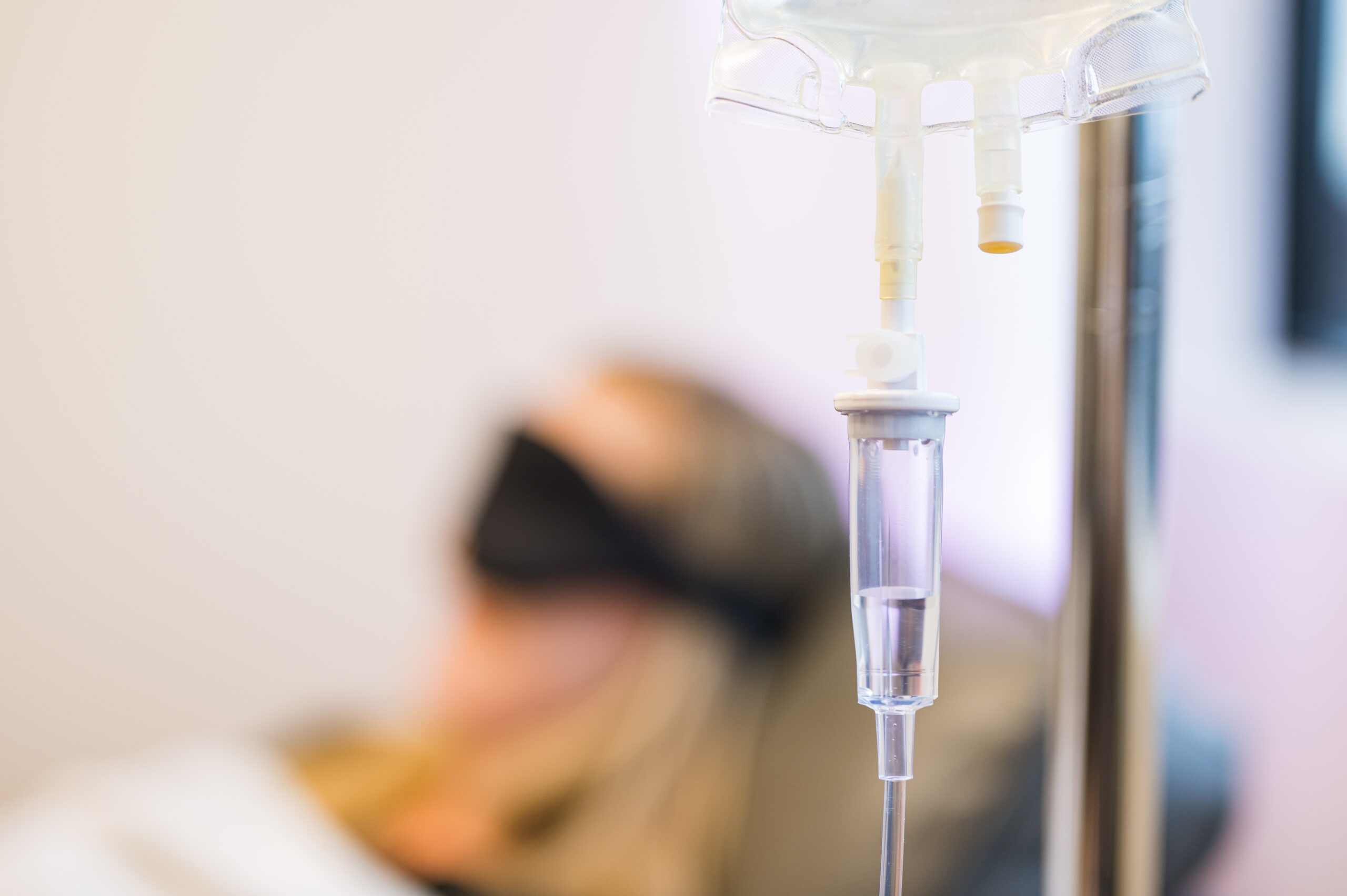
How Ketamine Can Help Address Your Most Challenging Mental Health Struggles
Ketamine is a remarkable medication that shows tremendous promise in improving mental health, and can alleviate depression, anxiety, chronic pain and the effects of traumatic life experiences.
Ketamine is not a new tool – Ketamine is, in fact, one of the most widely used drugs in modern medicine and is on the World Health Organization’s List of Essential Medicines. And recent trends in research suggest ketamine has far more usefulness than we ever imagined.
It was first developed in 1963 and FDA-approved in 1970. Since then, its use has been adopted by many hospitals and medical offices because of its rapid onset, proven safety, and short duration of action.
In this article, we’ll discuss what ketamine is, how it works in the brain, and how it might help you overcome some of your most challenging issues, including chronic pain, PTSD, and mood disorders.
What is Ketamine?
The Origin Story of Ketamine
The story of ketamine began in the 1950s when scientists began to search for an “ideal” anesthetic with pain-relieving properties. Their experiments led to the synthesis of a compound called phencyclidine.1
When scientists began to study phencyclidine, it was clear that the substance created potent pain relief in animals. Scientists were able to perform laparotomies – surgeries involving incisions into the abdominal cavity – in monkeys without pain.2
The first human clinical trials of phencyclidine showed patients had no drop in blood pressure or respiratory rate, had no swallowing difficulties and could control their eye-blinking.3
This meant that phencyclidine had a unique advantage over other sedatives and pain relievers at the time simply because it didn’t cause depression of the various functions listed above. In fact, surgeons at Wayne State University were able to complete an entire operation under phencyclidine alone in 30 patients.4
But researchers noted something else. Some patients, young or middle-aged men in particular, experienced prolonged excitation after a single dose of phencyclidine, some of which persisted for more than 12 hours. The excitation resembled psychosis with hallucinations and delirium.5
As a result, scientists determined that phencyclidine was clearly not suitable for human anesthesia. So they resumed the search for the ideal anesthetic agent.
The Rise of Ketamine
In 1962, Dr. Calvin Lee Stevens of Wayne State University synthesized a derivative of phencyclidine. One of the agents – named ketamine – was an excellent anesthetic agent and was also short-acting and did not have the problems with psychosis of phencyclidine.6
The reason for the name?
Ketamine earned its name from two key functional groups in its chemical structure, ketone and amine. Functional groups are groups of atoms responsible for a molecule’s chemical properties. Ketone + amine = ketamine.
The first human administration of ketamine was in 1964. About one-third of the patients reported unusual effects, and most described their experiences as similar to “a feeling of floating in outer space and having no feeling in their arms or legs.”7
Due to this effect, researchers characterized ketamine as a “dissociative anesthetic.” Dissociative anesthesia can be described as a state in which one feels detached from their body or physical environment.
Further research studies concluded that ketamine could be used as a potent pain reliever and anesthetic. And in 1970, ketamine hydrochloride was approved for human use by the Food and Drug Administration (FDA) under the trade name Ketalar.8
Today, ketamine is used for a variety of other purposes, including for the management of mental health issues such as treatment-resistant depression, suicidal ideation, and alcohol use disorder.9,10,11
How Does Ketamine Work?
Brain cells, also known as neurons, are messengers. They communicate information using electrical impulses and signaling chemicals called neurotransmitters.
When a neuron sends out a signal, it releases a neurotransmitter stored in a vesicle, which travels across a tiny gap between the two neurons called a synapse. The neurotransmitter then binds to a receptor on the receiving cell, thereby sending its message.
The “language” spoken depends on the identity of the neurotransmitter, the type of receptor, the type of cell, and where they are in the brain.
Some neurotransmitters are considered “excitatory,” which means they cause the receiving neuron to continue passing the message along to the next cell. Glutamate is the main excitatory neurotransmitter in the central nervous system (CNS). Other major excitatory neurotransmitters include epinephrine and norepinephrine.12
Other neurotransmitters are generally viewed as “inhibitory.” Unlike “excitatory” neurotransmitters, “inhibitory” neurotransmitters decrease the likelihood of the target cell taking action. The main “inhibitory” neurotransmitter in the adult human CNS is gamma-aminobutyric acid, more commonly referred to as just GABA.13
Ketamine acts primarily by inhibiting N-methyl-D-aspartate (NMDA) receptors. NMDA receptors are ion channels (membrane proteins that allow ions to pass through) involved in glutamatergic (excitatory) neurotransmission.
Studies have shown that ketamine binds to a site that is electrically deep in the open NMDA receptor. Doing so blocks the flow of ions through the channel, and ketamine can remain “captured” inside when the channel closes. Scientists call this mechanism a “trapping block.”
By preventing glutamate from activating the NMDA receptors, ketamine gives a break to the usual flow of information that every thinking human encounters. This explains ketamine’s main effects as a dissociative anesthetic – it briefly, and reversibly disrupts the usual flow of information in the brain.
But ketamine’s mechanism of action may go beyond NMDA receptor inhibition. It has also been proposed to affect many other targets, including:14
- Dopamine receptors
- Serotonin receptors
- Adrenergic receptors
- Opioid receptors
- Cholinergic receptors
- Sigma receptors
This suggests we might have only scratched the surface of ketamine’s potential for clinical use.
As with any other drug, ketamine’s effects are dose-dependent. That is, the more ketamine you take, the greater its effects.
Ketamine Use for Chronic Pain
As mentioned earlier, ketamine is known as a dissociative anesthetic. This anesthetic potential has led to ketamine being widely used in surgical settings, including pediatric surgery, due to its excellent safety profile, particularly around breathing and airway management.
It has also been used successfully in managing acute and chronic pain conditions due to its excellent analgesic, or pain relieving, properties.
Ketamine Use for Depression
There’s no denying that ketamine is a potent anesthetic and pain reliever. But since the mid-2000s, there has been a growing interest in its use outside of these indications.
One of the main areas that has been gaining momentum is the use of ketamine for depression.
How does ketamine exert powerful and rapid antidepressant effects?
One of the proposed mechanisms circles back to its interactions with NMDA receptors. Because they play such crucial roles in many neurological functions, NMDA receptors have become a key target for the treatment of neurological disorders, including depression.15
Ketamine has a great affinity for NMDA receptors on GABA interneurons, which are primarily inhibitory neurons of the nervous system.16 GABA interneurons suppress excitation of glutamatergic neurons. By inhibiting NMDA receptors, ketamine prevents the activation of GABA interneurons and, as a consequence, allows glutamate to surge.17
All of the extracellular glutamate activates another type of receptor called ɑ-amino-3-hydroxy-5-methyl-4-isoxazolepropionic acid (AMPA) ionotropic receptors. This leads to the activation of various signaling pathways that ultimately result in improved synaptic plasticity and synaptic strength.18
Synaptic plasticity refers to the capacity of synapses to change in response to how active or inactive they are. While it was originally only associated with learning and memory in the adult human brain, scientists have discovered that synaptic plasticity plays a major part in depression.19 Findings from clinical studies show that patients with depression have significantly reduced hippocampal and medial prefrontal cortex volumes. The loss of these vulnerable brain regions lead to the atrophy of neurons and glial cells – and fewer synapses.20
Evidence from studies suggests ketamine may help regenerate synaptic connections damaged by stress and depression.21 Ketamine’s unique mechanism of action makes it a breakthrough star among antidepressants. And unlike many other antidepressants that can take months to work, ketamine can reduce depressive symptoms within hours and sustain them by regulating mechanisms of synaptic plasticity.22,23
On March 5, 2019, the FDA approved esketamine, a derivative of ketamine, for patients with treatment-resistant depression.24
The powerful combination of Ketamine with therapy & coaching
Talk therapy is a way to help people identify and change a broad variety of mental illnesses and troubling thoughts or emotions. It promotes personal growth, symptom management, and well-being by talking openly with a licensed mental health professional who can help you develop healthier habits.
It can often be a life-saving treatment for someone with mental health issues.
But some people struggle to find relief despite numerous therapy sessions.
This is when consciousness-altering drugs might help. And the most promising among these drugs is none other than ketamine.
Ketamine’s altered state can also create conditions of relational and psychological openness, allowing trust in your care team that enables the deepest possible work to occur.
Ketamine’s potential to create mystical- and peak-type experiences also makes it an attractive tool for clinical intervention and subsequent personal growth. Peak experiences describe “moments of highest happiness and fulfillment,” in which individuals feel that they are at one with the universe.25 People who experience such moments report feeling “wonder, awe, reverence, humility, and surrender before the greatness of the experience.”26
And, it is always true that the most important changes that occur for long-term healing and quality of life come from self-generated insights and coaching provided by a ketamine experienced integration coach can be of tremendous benefit to maximize the insights of a ketamine treatment session.
The transpersonal experience of ketamine with talk therapy or integration coaching may help you develop new perspectives, gain new personal insights, and stimulate reframing of your current situation.27
Who is Ketamine for?
Ketamine isn’t just for people with depression. Researchers have explored the use of ketamine as a treatment for a broad range of difficult-to-treat conditions, including:28
- Chronic neuropathic pain
- Opioid tapering
- Anxiety disorder
- Obsessive-compulsive disorder
- Post-traumatic stress disorder (PTSD)
- Attention deficit hyperactivity disorder (ADHD) which may be a mis-diagnosed anxiety disorder
- Substance use disorders
Our Treatment Process
Your treatment team will consist of a tailored combination of a certified ketamine integration coach, an experienced nurse, and your ordering clinician. Your nurse will be the one to administer your ketamine via an IV and will be by your side during your entire session.
To determine whether ketamine is right for you, one of our MaxWell Clinic clinicians will meet with you during a free 30-minute consultation to gather information about you and your past medical and psychiatric history. They may ask you about your symptoms (current and past), previous treatment attempts, medications you’re taking, and your goals and intentions.
Your clinician will discuss the expected effects and decide on the number and frequency of Ketamine sessions. A preparatory session with your ketamine integration coach will occur before your first infusion to orient you to the process.

Your Ketamine Treatment – What to Expect
On the day of the session, it’s important to follow the instructions given by your MaxWell clinician to maximize the benefits. This may include avoiding certain foods, drinks, and/or medications before your treatment.
When you arrive, we will discuss your current state and remind you of your goals and intentions. We will remind you of the fundamental rule of your experience – to trust and accept whatever comes up, even if you don’t fully understand it.
At MaxWell Clinic, we only administer ketamine via IV (intravenously) so we can carefully control the dosage. This is the most predictable administration route which allows for maximal customization of the experience. We use a range of dosing strategies and breathing techniques to tailor a personalized approach for each patient. During your infusion your nurse will consistently monitor your heart rate and rhythm as well as your respiratory rate.
At MaxWell Clinic, your comfort and experience during ketamine treatment are paramount. You’ll receive an eye mask to enhance your journey, accompanied by high-quality audio headphones playing carefully curated music, guiding you towards internal focus. A nurse will conduct a thorough assessment to ensure optimal dosage and monitor your ketamine experience, remaining present in the room without verbal interference. After completion, your safety is our priority, and you’ll be asked to remain until deemed fit to leave by our treatment team, typically allowing at least 30 minutes post-infusion for recovery, considering individual metabolic variations in medication clearance.
We ask that you make arrangements for transportation with a trusted person. You should not drive for the rest of the day following your treatment.
Your journey with ketamine treatment at MaxWell Clinic involves periodic meetings with your dedicated integration coach, ensuring you have the opportunity to vocalize and process your experiences throughout the treatment process. Integration stands as a cornerstone of our approach, distinguishing us from other clinics, as we understand its vital role in your healing journey. To integrate is to harmonize all facets, drawing from memories, ketamine encounters, and daily experiences, culminating in a comprehensive understanding essential for your sustained well-being. By piecing together these elements, you pave the way towards wholeness and lasting health, forming the bedrock of your long-term benefit.
Is Ketamine Safe?
Ketamine is considered safe and is backed by decades of clinical use and scientific research. However, there are some potential side effects you should be aware of.
If administered at sub-anesthetic doses by infusion, ketamine may cause the following adverse effects:29
- Perceptual disturbance (expected and usual)
- Dissociation (expected and usual)
- Increased blood pressure
- Nausea and vomiting
- Drowsiness
- Dizziness
- Anxiety
- Headache
In general, these effects are temporary and should subside within a few hours.
An overdose of ketamine can cause someone to lose consciousness and have dangerously slowed breathing, so it very important to only seek treatment with a licensed, knowledgeable medical provider.30
MaxWell Clinic has a long history of providing cutting-edge treatments under the watchful care of our seasoned and licensed clinicians. Your safety and wellness is our top priority.
Is Ketamine Addictive?
Ketamine has a low risk of addiction when used under proper medical supervision and administered as part of a controlled treatment plan. Unlike substances that are commonly associated with addiction, such as opioids or stimulants, ketamine works through different mechanisms in the brain and does not produce the same addictive properties. When used therapeutically and in prescribed doses, ketamine is generally safe and well-tolerated. At MaxWell Clinic, we prioritize the responsible and judicious use of ketamine infusion therapy, closely monitoring each individual to ensure their well-being and mitigate any potential risks. Our expert medical team will guide you through the process, addressing any concerns and providing ongoing support to help you achieve optimal results safely.
Nashville Ketamine Therapy
Let’s face it, past trauma and treatment-resistant depression aren’t easy to overcome, even with professional help and medication.
But ketamine offers many patients a renewed sense of hope. If you’re struggling with chronic pain, PTSD, treatment-resistant depression, or other mood disorders, it may be able to help you, too. If you’re in the Nashville area and would like to schedule your free Ketamine Consultation with one of our clinicians call or text us at 615-370-0091. If you have more questions, please schedule a free information call with one of our New Patient Coordinators today to learn more.
References:
- https://journals.lww.com/ejanaesthesiology/fulltext/2017/09000/history_of_anaesthesia__the_ketamine_story___past,.2.aspx
- https://journals.lww.com/ejanaesthesiology/fulltext/2017/09000/history_of_anaesthesia__the_ketamine_story___past,.2.aspx
- https://journals.lww.com/ejanaesthesiology/fulltext/2017/09000/history_of_anaesthesia__the_ketamine_story___past,.2.aspx
- https://journals.lww.com/ejanaesthesiology/fulltext/2017/09000/history_of_anaesthesia__the_ketamine_story___past,.2.aspx
- https://www.bjanaesthesia.org/article/S0007-0912(17)37287-2/pdf
- https://journals.lww.com/ejanaesthesiology/fulltext/2017/09000/history_of_anaesthesia__the_ketamine_story___past,.2.aspx
- https://pubs.asahq.org/anesthesiology/article/113/3/678/10426/Taming-the-Ketamine-Tiger
- https://www.ncbi.nlm.nih.gov/pmc/articles/PMC5126726/
- https://www.ncbi.nlm.nih.gov/pmc/articles/PMC4243034/
- https://www.ncbi.nlm.nih.gov/books/NBK470357/
- https://ajp.psychiatryonline.org/doi/10.1176/appi.ajp.2021.21030277
- https://www.ncbi.nlm.nih.gov/books/NBK539894/
- https://www.ncbi.nlm.nih.gov/books/NBK539894/
- https://link.springer.com/article/10.1007/s43440-021-00232-4
- https://www.mdpi.com/1422-0067/23/18/10336
- https://pubmed.ncbi.nlm.nih.gov/27807158/
- https://journals.sagepub.com/doi/full/10.1177/2045125320916657
- https://journals.sagepub.com/doi/full/10.1177/2045125320916657
- https://pubmed.ncbi.nlm.nih.gov/23268191/
- https://pubmed.ncbi.nlm.nih.gov/30470559/
- https://www.science.org/doi/10.1126/science.1222939
- https://www.dovepress.com/synaptic-microenvironment-in-depressive-disorder-insights-from-synapti-peer-reviewed-fulltext-article-NDT
- https://www.nature.com/articles/s41467-022-30386-5
- https://www.mdpi.com/1422-0067/23/18/10336
- https://www.frontiersin.org/articles/10.3389/fpsyg.2022.858745/full
- https://www.frontiersin.org/articles/10.3389/fpsyg.2022.858745/full
- https://www.dovepress.com/ketamine-assisted-psychotherapy-a-systematic-narrative-review-of-the-l-peer-reviewed-fulltext-article-JPR
- https://www.dovepress.com/ketamine-assisted-psychotherapy-a-systematic-narrative-review-of-the-l-peer-reviewed-fulltext-article-JPR
- https://journals.sagepub.com/doi/full/10.1177/2045125320916657
- https://www.dea.gov/sites/default/files/2020-06/Ketamine-2020_1.pdf
Disclaimer:
This blog provides general information and discussions about health and related subjects. The information and other content provided in this blog, website or in any linked materials are not intended and should not be considered, or used as a substitute for, medical advice, diagnosis or treatment. This blog does not constitute the practice of any medical, nursing or other professional health care advice, diagnosis or treatment. We cannot diagnose conditions, provide second opinions or make specific treatment recommendations through this blog or website.
If you or any other person has a medical concern, you should consult with your health care provider or seek other professional medical treatment immediately. Never disregard professional medical advice or delay in seeking it because of something that you have read on this blog, website or in any linked materials. If you are experiencing a medical emergency, please call 911 or call for emergency medical help on the nearest telephone immediately.


